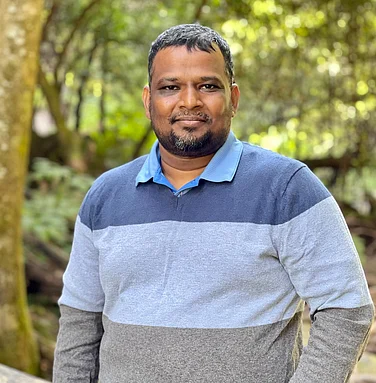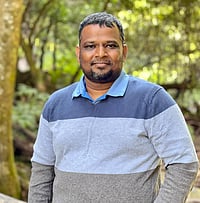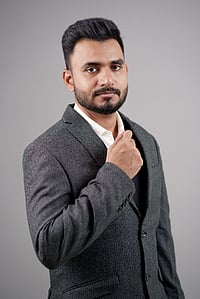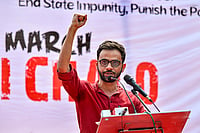In this exclusive feature, we delve into the career and contributions of Sumit Bhatnagar—an award-winning technologist and strategic leader shaping the future of AI-powered cloud infrastructure. With two decades of experience across Fortune 100 firms and highly regulated industries, Bhatnagar has gained recognition as a global voice in enterprise transformation. His innovations—from the AICloudAdvisor platform, recognized by the 2024 New York Design Awards, to his Springer-published book Art of Decoding Microservices—are helping redefine how organizations approach compliance, scalability, and modernization. We spoke with him to learn more about the engineering mindset behind his impact.
Q: Sumit, you've had a remarkable journey in multiple financial sectors. What has shaped your career philosophy as a technologist and leader?
Thank you. At the core, I believe technology should solve problems that matter — not just technically, but socially and economically. Over the past two decades, I’ve led modernization initiatives for platforms that power FinTech, financial compliance, and large-scale digital services. Whether working with a financial company or one of the world’s largest banks, my approach has always been to fuse innovation with accountability, scalability, and purpose.
I’ve been fortunate to work in environments that demand both speed and precision — such as architecting secure microservices for a leading global bank or overhauling compensation systems that handle $180 million+ in annual payouts at a major insurance company. These experiences taught me that true innovation lies at the intersection of engineering, policy, and public interest.
Q: Your AICloudAdvisor platform has garnered attention. What problem does it aim to solve—and how?
AICloudAdvisor was born out of necessity. Many organizations struggle to align their cloud investments with actual performance and governance outcomes. We needed a tool that could simplify that complexity — and do it intelligently. The platform uses a smart AI engine to evaluate workloads, regulatory needs, and optimization metrics, helping enterprises architect the right cloud strategy from the ground up. It’s not just a tool — it’s a framework for prescriptive, evidence-based cloud adoption.
Q: You were recently invited to speak at AIDevSummit 2025, a global industry event that brings together leaders in artificial intelligence and enterprise technology, where you presented your AICloudAdvisor platform which also received the 2024 New York Design Award. How was the reception from the industry and peers?
Both moments were incredibly meaningful. The reception at AI DevSummit was energizing. It was a global stage, with thought leaders from AI, DevOps, and infrastructure coming together. The conversations I had with CTOs and enterprise architects reaffirmed that there’s a real hunger for tools that balance innovation with governance.
Winning the New York Design Award in the Digital – User Experience category was especially validating. The judges highlighted our focus on enterprise usability, which was always a top priority. I believe that intelligent systems should empower—not overwhelm—decision makers.
Q: Your book Art of Decoding Microservices has gained significant momentum in a short span. Can you tell us more about its industry and academic impact?
Absolutely. The book was published by Apress, an imprint of Springer Nature—a globally respected academic and professional publisher. It sold over 1,500 copies within the first two months and has continued to receive strong interest from both practitioners and academic institutions.
Notably, the book was independently reviewed by South Asian University—a SAARC-established institution—whose senior professor, Dr. Jagdish Chand Bansal, praised it for its technical depth and practical relevance. He also noted that the book is being incorporated into academic curricula to teach microservices architecture and modern software design. The book’s adoption by engineers in FinTech and regulated industries—alongside its integration into academic curricula—highlights its broad and lasting impact across both industry and education. For me, this reinforces the book’s mission—to serve as a real-world guide for engineers and a learning resource for future architects.
Q: You’re affiliated with respected professional communities like IEEE, the Forbes Technology Council, and the Soft Computing Research Society (SCRS). How are you using these platforms to give back to the broader technology community and society?
That’s a great question. I see these memberships not just as recognitions, but as responsibilities. Through the Forbes Technology Council, I regularly contribute thought leadership articles that help decision-makers navigate real-world challenges in cloud strategy, digital transformation, and secure architecture. These pieces are aimed at sharing insights that others can apply—whether they're startups or large enterprises.
With IEEE, I stay engaged with academic and industry advancements, and I actively mentor early-career engineers through forums and webinars. My association with the Soft Computing Research Society (SCRS) allows me to support cutting-edge research in AI, optimization, and distributed systems—areas critical to solving large-scale, real-world problems. I also collaborate with academic institutions and contribute to workshops and discussions to help bridge the gap between research and application.
Ultimately, these affiliations provide a meaningful channel to pay it forward—by mentoring, sharing, and helping to shape the future of ethical and impactful technology.
Q: As someone deeply invested in both innovation and impact, what legacy do you hope to leave through your work?
My goal is to use technology not just as a tool for advancement, but as a force for inclusion, resilience, and trust. I want to be remembered not only for solving technical problems, but for solving meaningful ones—those that make life better for real people.
Whether it's streamlining digital infrastructure in critical sectors or mentoring the next generation of engineers, I view every initiative as a chance to build something that lasts and gives back to society. We live in an age where systems shape public life—so we need technologists who care as much about ethics and usability as they do about code and performance. That’s the standard I hold myself to.
At the end of the day, scaling innovation responsibly means ensuring it serves not just enterprises, but people, communities, and future generations. That’s the legacy I’m working toward.


























